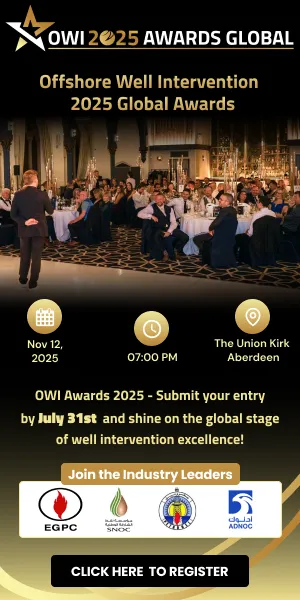Equatorial Guineas oil deposits have ranked it third amongst sub-Saharan African oil producing countries. It is leading the way in Africa in the monetisation of its gas reserves, while other countries are still flaring most of their gas. Government policies in the sector are fuelling an investment climate that is attracting a tremendous amount of international interest in the opportunities in the oil & gas sector.
Equatorial Guineas oil deposits have ranked it third amongst sub-Saharan African oil producing countries. It is leading the way in Africa in the monetisation of its gas reserves, while other countries are still flaring most of their gas. Government policies in the sector are fuelling an investment climate that is attracting a tremendous amount of international interest in the opportunities in the oil & gas sector.
History
Since the discovery of the Zafiro field at the beginning of the 1990s, Equatorial Guinea, with a population of about one million people, has risen to the rank of small emirate and is today sub-Saharan Africas third largest producer of crude oil after Nigeria and Angola, from producing 5,000 bpd at the beginning of the 1990s to recently, when production peaked at 400,000 bpd. Crude oil exploration in Equatorial Guinea started in the mid 1960s. Licence blocks were first designated by the Spanish administration and offered for international tender in 1965 with awards going to groups operated by Mobil and Spanish Gulf Oil (Spangoc) but the exploration efforts led to no commercial success.
After independence in 1968, petroleum activity was much reduced and further significant exploration did not occur until after the 1979 change of Government. Hispanoil and the new Government formed a joint venture company, GEPSA, which discovered the Alba gas condensate accumulation in 1983. GEPSA deemed Alba to be non-commercial and their licenses lapsed. During the 1980s, Total and Elf operated groups explored both onshore and offshore without commercial success.
The Alba acreage was re-licensed in 1990 to US independent Walter International who commenced production in 1991 from two new wells. In 1995 Nomeco (now CMS Oil and Gas) acquired Walter and they progressively expanded onshore processing capacity to cope with increased production from additional Alba wells. All CMS assets were acquired by Marathon in 2001, and Marathon has continued with investment and expansion.
Regulatory body & national oil company
The Ministry of Mines, Industry and Energy is the overall regulatory body for the petroleum industry in Equatorial Guinea. The Equatoguinean government created a national oil company (GEPetrol) that became operational in 2002. GEPetrols primary role is to promote & negotiate acreages, manage the governments stake in the various production sharing contracts (PSCs), marketing of its share of crude oil and providing services to the sector through joint ventures (JVs) with international companies.
Oil & Gas Production
Zafiro Field
In 1995, ExxonMobil and Ocean Energy (bought by Devon Energy) discovered the Zafiro field, which is located Northwest of Bioko Island. Zafiro was the first deepwater field to be brought on stream in West Africa and is currently the main producing field in Equatorial Guinea; ExxonMobil is the operator.
The field contains estimated recoverable reserves of over 400mn barrels, and is Equatorial Guinea's largest oil producer, with an output of 180,000 bpd. Key assets include the Zafiro floating production unit (FPU), the Jade platform and the floating production storage and offloading vessel (FPSO), Serpentina. MEGI (Mobil Equatorial Guinea Inc) owns 71 per cent of Block B & GEPETROL the rest. Mobil also farmed into Block C, where its partners are Repsol & GEPETROL.
Ceiba field and the Okume complex
Equatorial Guineas second major producing oil field, is located just offshore of Rio Muni in exploration Block G. This block contains the Ceiba field as well as the Okume Complex. The Ceiba field was discovered on the 6th October 1999, by Triton now Amerada Hess Corporation. The field contains estimated recoverable reserves of 113 mn barrels, and production began in December 2000, with an initial output of 12,401 bpd rising presently to a production of approximately 40,000 bpd, from the floating production storage and offloading (FPSO) vessel, Sendje Ceiba.
Block G also contains the Okume Complex facility, construction of which began in August 2004 following approval of the plan of development by the Republic of Equatorial Guinea. The complex is based on the draining of the Oveng and Okume/Ebano and Elon reservoirs, consisting of three platforms, namely Okume-1, Okume-2 and Okume-3. Okume-1, the complexes central processing facility, is tied to the Sendje Ceiba Floating Production Storage and Off-loading (FPSO) vessel which contains a storage capacity of two million barrels of oil, a processing capacity of 120,000 bbl/d and a water injection capacity of 135,000 bbl/d.
The development achieved its first oil on December 14, 2006, with oil production of 70,000 bpd, taking the total production of Hess to 110,000 bpd.
Alba Field
Equatorial Guinea's third largest field is located 19 km north of Bioko Island. Alba is a major condensate field containing an estimated 400mn barrels of liquids. The field currently produces condensates and liquefied petroleum gas (LPG).
Marathon Oil Corporation is the operator of the Alba block & block D. Shortly after establishing their presence in Equatorial Guinea in January 2002, they embarked on the phase 2a, 2b & 3 expansion projects. The phase 2a enabled Marathon to expand its recovery of condensate from 14,500 bbl/d to 51,000 bpd. The phase 2b expanded existing LPG production capacity to a factor of 23,000 bpd. Phase 3 was the construction of Train 1 of an LNG plant, this was completed in 2007.
Exploration and field development
Equatorial Guineas exploration & production activity is carried out by various companies who are at different stages of their activity. The three main fields that are producing are the Zafiro, Ceiba & Okume & Alba fields. More exploration activities are planned in these fields. Other new discoveries include condensate discovered in Block G, I & O by Noble Energy, Block R by Ophir Energy, in Block C with Repsol as the operator and also crude oil found in Block I by Noble Energy and Block P by Devon Energy who sold its interest in the field to GEPetrol. Other key players that own blocks solely or in conjunction with partners include PetroSA, CNOOC, Glencore, Atlas Petroleum, Afex, NNPC, ONGC Videsh, Fruitex & Atlas.
Gas Sector
In 2005, the state national gas company, Sociedad Nacional de Gas de Guinea Ecuatorial (Sonagas, G.E.), was formed. In 2009 Sonagas formed a consortium called 3G with E.ON Ruhrgas, UNION FENOSA Gas and Galp Energia. The aim of this company is to build its own gas gathering infrastructure, negotiate with the upstream operators for their gas, select different projects for gas monetisation, including domestic use of gas and export solutions, in particular gas that has already been discovered and is currently re-injected or flared in the zone of the Gulf of Guinea. This is in-line with the governments policy to reduce gas flaring from productive fields, minimise pollution to the environment and make Equatorial Guinea a major gas hub in the Gulf of Guinea.
3G plans to get additional gas supplies from the Zafiro field which presently flares 71 per cent of its gas and other new gas reserves & condensate discoveries coming on board. They also plan the exploit the agreements reached with the governments of Nigeria & Cameroon, for their gas reserves.
Gas utilisation
The Equatoguinean governments recent estimate of its gas reserves is 4.5 trillion cubic feet (tcf), this is up three-fold, it was previous pegged at 1.5 (tcf). In order to achieve its vision of being a gas hub in the gulf of Guinea, the government initiated jointly with some operators, a number of gas monetisation projects. The main focus has been the Alba Field and associated Punta Europa plant. About 100 mmcfd of Alba gas is now re-injected into the reservoir with the remainder providing the feed for various gas utilisation projects based at Punta Europa plant in Malabo, to the north of Bioko island. This has eliminated the need to flare gas the gas from the Alba Field. The plant consists of a condensate & gas processing plant that feed the LPG, Methanol, LNG and a power generation plants.
Methanol Plant
The Atlantic Methanol Production Company (AMPCO), a consortium comprising Marathon Oil 45 per cent, Noble 45 per cent and Sonagas 10 per cent, completed the construction of a Methanol Plant at Punta Europa in May 2001. The plant consumes around 125 mmcfd of 1000 BTU quality gas to produce 19,000 bpd of methanol. The plant has a storage capacity of 900,000 bbls and the methanol is exported to worldwide markets via two dedicated 300,000 ton methanol carriers.
LPG processing Plant
The LPG plant has been in operation since 1991 and after a $350 million expansion program between 2003-2005, its production went up to 23,000 bpd. A small fraction of the LPG produced is consumed locally and the bulk of it is exported to the US & Europe. Partners in the LPG plant are Marathon 52.2 per cent, Noble 27.8 per cent & Sonagas 20 per cent.
Most of Equatorial Guineas natural gas production is exported in the form of LNG. Marathon Oil Corporation and its partners completed in early 2007 Train 1 of the US$1.4bn Punta Europa LNG facility on Bioko Island and first production of LNG was in May 2007. The plant is designed to process approximately 3 tcf of dry gas from the Marathon-operated Alba Field. Its partners are Marathon, 60 per cent, Sonagas, 25 per cent, Mitsui, 8.5 per cent and Marubeni, 6.5 per cent. All LNG produced has been sold to British Gas Marketing Limited under a 17 year purchase agreement.
One of the world's fastest ever LNG projects, EG LNG Train 1 ranks Equatorial Guinea among an elite group of LNG suppliers and positions it as a competitive force in the Atlantic Basin market. While first LNG cargo from Train 1 in 2007 proved to be a significant milestone for EG LNG, Punta Europa has space for multiple LNG trains. In the future, EG LNG could produce as much as 20mn tonnes of LNG per annum (MMtpa).
The Gulf of Guinea region holds significant undeveloped gas reserves. An estimated 30 tcf of natural gas have been discovered within 100 km of Punta Europa, where EG LNG is located. Train 2 and future LNG trains would process gas from fields in Equatorial Guinea and neighboring countries, making EG LNG the first LNG company to source feed stock from international sources.
Investment opportunities
The oil & gas industry is the mainstay of the Equatoguinean economy. It is the main source of foreign exchange earnings (90 per cent) and development finance in the country accounting for 85 per cent of total government revenue. The government is promoting this sector by moving ahead with the award of further blocks for exploration & production offshore, the diversification of the industry revenue base by the monetisation of its natural gas resources and encouraging E&P companies to explore inland basins. The planned growth and potentials of the industry creates significant opportunities for outside investors. Investment opportunities include acquisition of blocks for E&P both onshore & offshore, building a refinery, an LNG Train 2 plant, an ammonia plant, a formaldehyde plant, another LPG plant and local marketing and distribution of oil & gas products.




